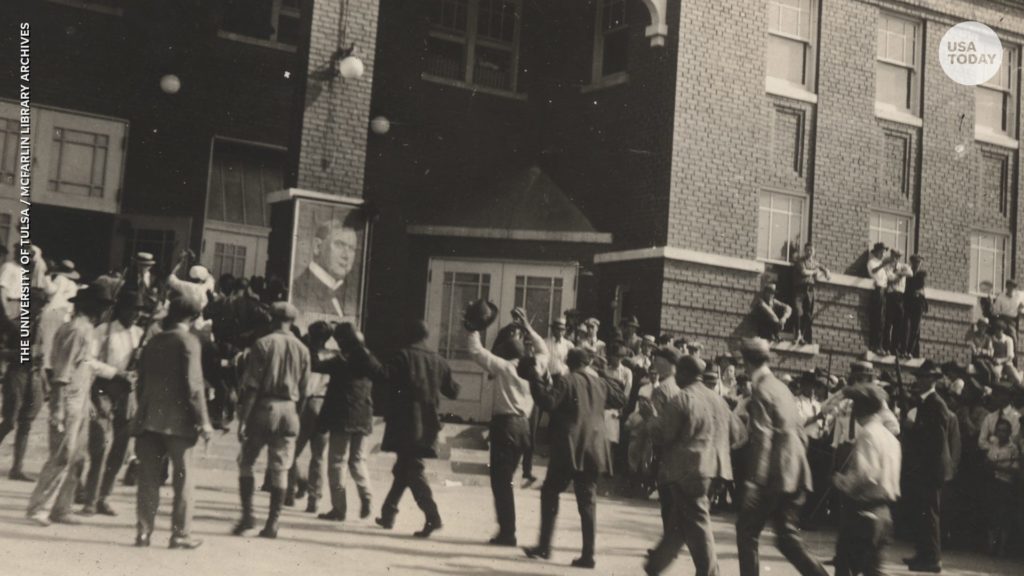
Dick Rowland was indicted on June 6, 1921 with “unlawfully, willfully, wrongfully, forcibly, violently, and feloniously” assaulting and attempting to “ravish, rape, and carnally know” Sarah Page, a woman of “previous chaste and virtuous character.”[1] Sarah Page refused to press assault charges and, in September of 1921, all charges against Rowland were dismissed.[2] Both left Tulsa and, according to Rowland’s mother, Damie Rowland, they moved to Kansas City, Kansas where they lived together for a while. Damie lost her home in the fires of the Massacre and, although she occasionally received letters from her son, she never saw him again. It is believed that Dick Rowland eventually moved to Oregon to work in the shipyards during World War II.[3]
Tulsa County convened an all-White Grand Jury to determine whether there should be indictments related to the Massacre. This Grand Jury only indicted Black residents of Greenwood for causing the Massacre—people who had their homes and businesses destroyed by the angry White mob. On June 6, 1921, J.B. Stradford was the first person formally charged with inciting a riot, but by the time he was charged he had escaped to Chicago. Despite their concerted efforts the Tulsa authorities never managed to extradite him.[4] In the end, Garfield Thompson, a black man who was arrested during the Massacre for carrying a concealed weapon was sentenced to thirty days in the county jail. No one else served any jail time for crimes perpetrated during the Massacre as Tulsa city officials dropped all charges. It was their hope that this act of admonition would help alleviate the “humiliation of the citizenry.”[5] A grand jury later placed the blame for the Massacre squarely on the shoulders of Black Tulsans, clearing the city of any and all responsibility. The Grand Jury also called for more aggressive policing of Black people in Tulsa, a practice which continues to this day.
In the immediate aftermath of the Massacre, The Tulsa Tribune openly praised the destruction of “Old Nigger Town” and advocated for the City of Tulsa to never allow Black residents to rebuild Greenwood to its former glory. As a result, the Greenwood community suffered economic ruin, which robbed generations of Greenwood descendants of their rightful inheritance, and the wealth, financial security, and real, personal, and intellectual property they would have had if not for the Massacre. However, the harm that resulted from the Massacre did not stop after the ashes cooled, nor did it stop after the trial ended, or the insurance claims were denied. Instead the harm continued. For the next hundred years, Tulsa city officials and prominent white citizens continued to work to displace Greenwood’s Black community stealing their land, property, and lives in the process.
[1] State of Oklahoma vs. Dick Rowland, Case No. 2239, Tulsa County District Court, filed June 18, 1921.
[2] Ibid.
[3] Bob Hower, Ed. 1921 Tulsa Race Riot and the American Red Cross. “Angels of Mercy,”
[4] Lee Roy Chapman, "The Nightmare of Dreamland." This Land Press. April 18, 2012.
[5] Grand Jury Report, Final Report of the Tulsa Grand Jury, Oklahoma State University Tulsa Special Collections and Archives, Ruth Sigler Avery Tulsa Race Riot Archive, Series 2, Research Box 6.



